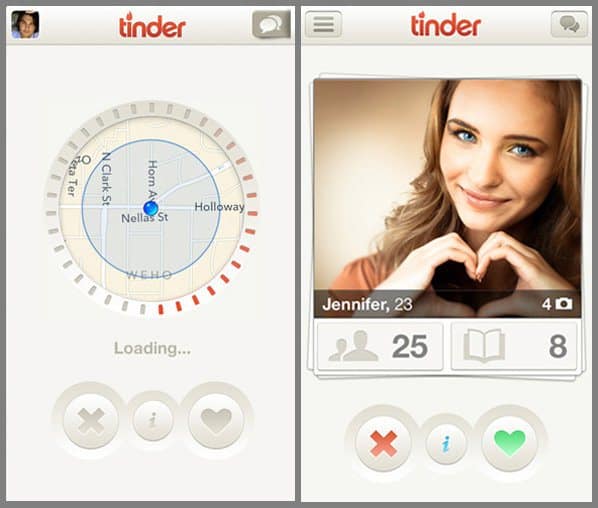Hot or not? This age-old question, often debated amongst pop culture aficionados and fourteen-year-old girls, has now been adapted as a speedy method of matchmaking for popular dating app Tinder.
Tinder is an app designed to introduce singles. It accomplishes this goal by reducing dating to a simple swipe of the thumb. Simply put, Tinder users create a profile consisting only of a first name, an age, and a series of pictures chosen from the user’s Facebook. After the appropriate selfies (must show you are both equally as adorable as you are adventurous) are chosen, you’re able to search for other users in your area. Based solely on their pictures, you then decide whether to strike up a conversation or not. Swipe left = No. Swipe right = Yes. If both users swipe right you are notified that a match has been made. PRESTO! Love at (literally) first sight.
In a purely investigative strategy, that has absolutely nothing to do with my current perpetual single status, I downloaded the app. At first, I was hesitant. Having complete strangers judge me based on a few pictures seemed shallow, stressful and superficial. What I didn’t realize was that it could also be fun.
Before you automatically assume I’m a terrible person, hear me out. What do you do on a night out? Whether it is at a bar, a club, or a party, you instinctively look for someone you like. You look for broad shoulders, toned arms, or whatever makes your nether regions dance. You don’t look for someone with a university degree, who reads Franz Kafka, or volunteers on weekends. Those things come later. They come after the initial lure of physical attraction; you need to like a smile or jaw line before you dig deeper. Tinder capitalizes on this initial reaction.
My first Tinder match was with Jake. Jake was somehow still tan in October, had a smattering of cute freckles, and was once on the national sailing team; enough said. We started chatting and to my surprise he also liked to travel, listened to good music, and was close with his family. Without that initial first impression however, I would never have learned these things. Sure, Tinder may embody a current state of social interaction that has a short attention span and is fixated on looks, but that’s also human nature. When the Jake’s of the world come knocking, you’re going to answer.
As an introvert, I found that Tinder appeals to me. However, the anonymity provided is both a blessing and a curse. It allows people like me the confidence to approach others without the fear of rejection. Unfortunately, the anonymity of cyberspace can also bring out the worst in people. Newsflash: you’re on TINDER; don’t get your hopes up. Not everyone is a Jake. There are Brets who shamelessly promote their awful comedy act. There are Mikes who invite you over to check out their new “house” (i.e. bed). There are Philips from Eastern Europe who endlessly repeat the phrase, “Hello, how are you?” because that is the only English they know.
Therein lies the problem of Tinder: It allows people of all social types to connect but also provides the perfect cyberspace veil to hide beneath. One can easily hide their nervous tick, addiction or sloppy manners. It can create a false sense of security for users that doesn’t translate into the real world. So, while it’s really fun to meet Jakes and flirt via emoticons, beware.



 Follow Us On Instagram
Follow Us On Instagram
